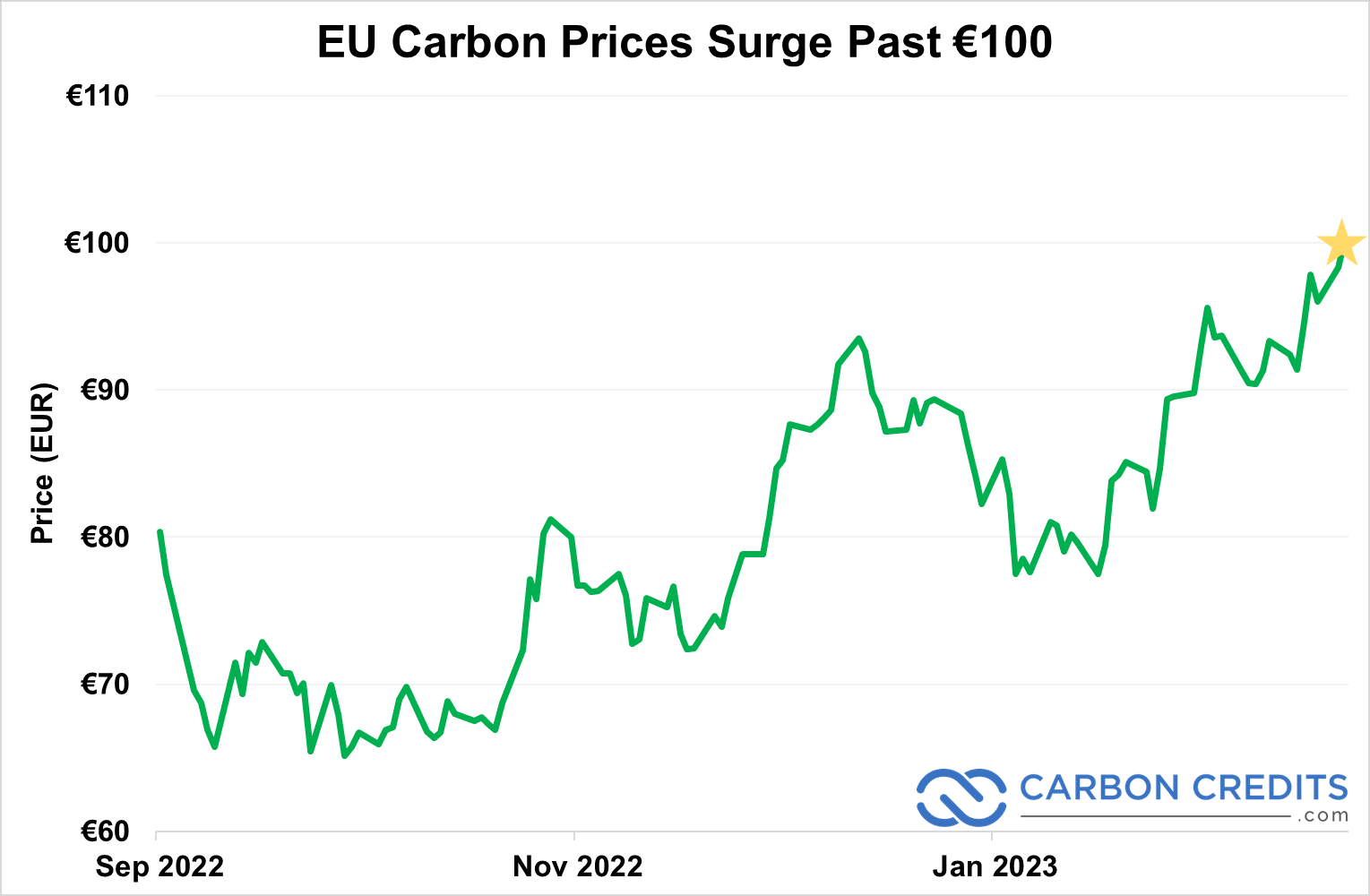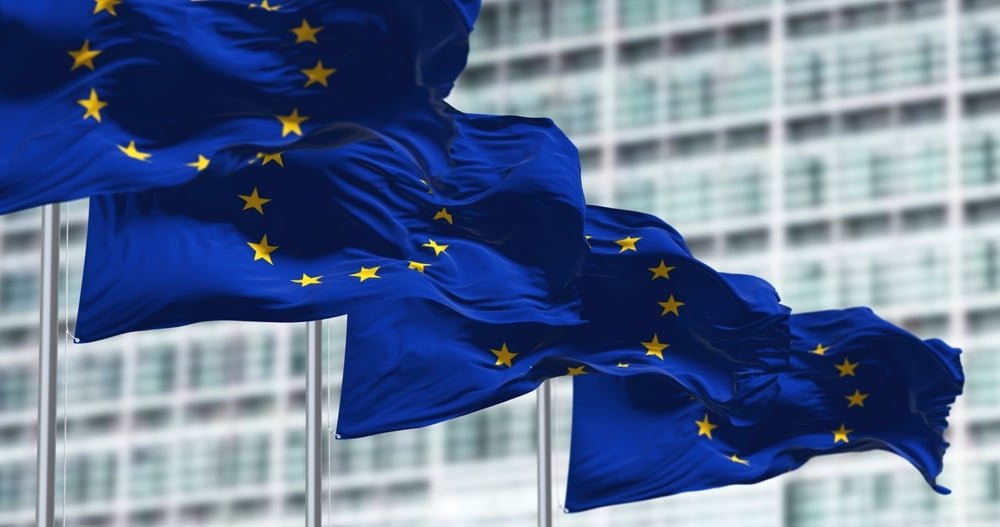The European Union’s Emissions Trading System (EU ETS) has experienced significant fluctuations in the carbon prices over the years.
As of February 2023, the price of carbon in the EU ETS has exceeded 100 euros per metric ton of CO2. That’s a significant increase from just a few years ago when the price was around only 10 euros per ton.

The EU carbon price has experienced these fluctuations due to a variety of factors. These include policy changes, market forces, and global trends.
The EU ETS is a cap-and-trade system that aims to reduce greenhouse gas emissions by putting a price on carbon. The system covers emissions from power plants, energy-intensive industries, and commercial aviation. It is one of the largest and most established carbon markets in the world.
- Note: Click here to view all carbon prices in the voluntary and compliance markets.
The Drivers Behind the High EU Carbon Price
One of the main drivers of the high carbon price in the EU ETS is the region’s commitment to cut GHG emissions by at least 55% by 2030 compared to 1990 levels. This ambitious goal requires a significant emissions reduction from the energy sector, which is responsible for a large share of the EU’s emissions.
In addition, market forces have also contributed to the price increase.
Operating on a cap-and-trade system, there’s a limited number of EU allowances available for companies to emit carbon. As the cap decreases over time, the price of allowances increases as companies are willing to pay more to meet their emissions targets.
Global trends have also played a role in the increase in EU carbon prices. There has been a growing awareness of the urgent need to address climate change.
The Future of the EU Carbon Prices
Looking ahead, the future of the EU ETS will depend on a variety of factors, including political will, technological innovation, and global trends.
The high EU ETS carbon prices provides a powerful incentive for businesses and investors to transition to a sustainable future. However, concerns have been raised about the impact of this on consumers and businesses.
To address these concerns, the EU has implemented measures to protect vulnerable industries and consumers. These include exemptions for certain industries and measures to protect low-income households from energy poverty.
Who Buys EU ETS Offsets?
The primary buyers of EU ETS offsets are companies that have emissions reduction obligations to comply with. These companies may choose to buy offsets to meet a portion of their emissions compliance, as offsets can be less expensive than reducing emissions within their own operations.
EU ETS offsets are from projects that reduce carbon emissions in developing countries, such as renewable energy projects, energy efficiency improvements, and reforestation efforts. These projects generate carbon credits, which can be purchased and used by companies to offset a part of their footprint.
The demand for EU ETS offsets has been driven in part by the increasing ambition of the bloc’s climate targets. This has created a greater need for emissions reductions across the economy. This has further led to an increase in carbon prices and a corresponding increase in the demand for offsets.
Examples of large multinational corporations that are committed to reducing their GHG emissions and may be purchasing EU ETS offsets include companies such as Microsoft, Unilever, and Nestle.
These companies have made public commitments to reducing their carbon footprints. And they have implemented a variety of measures to achieve these goals, including:
- purchasing renewable energy,
- improving energy efficiency, and
- investing in emissions reduction projects.
It’s worth noting that there are a growing number of companies that are voluntarily purchasing offsets as part of their efforts to become carbon-neutral or achieve other sustainability goals.
These companies may include those in the tech industry, such as Salesforce and Google, as well as companies in the fashion industry, such as Burberry and H&M.
The EU Emissions Trading System
The high carbon price is a reflection of the urgent need to address climate change. It also provides a powerful incentive for businesses and investors to transition to a sustainable future.
However, there are concerns about the impact of the high EU carbon prices on consumers and businesses. So, it will be important for the EU to strike a balance between achieving its climate targets and protecting vulnerable groups.
The future of the EU ETS will depend on various factors. Thus, it will be crucial to continue to monitor its carbon price and its impact on the economy and society.

